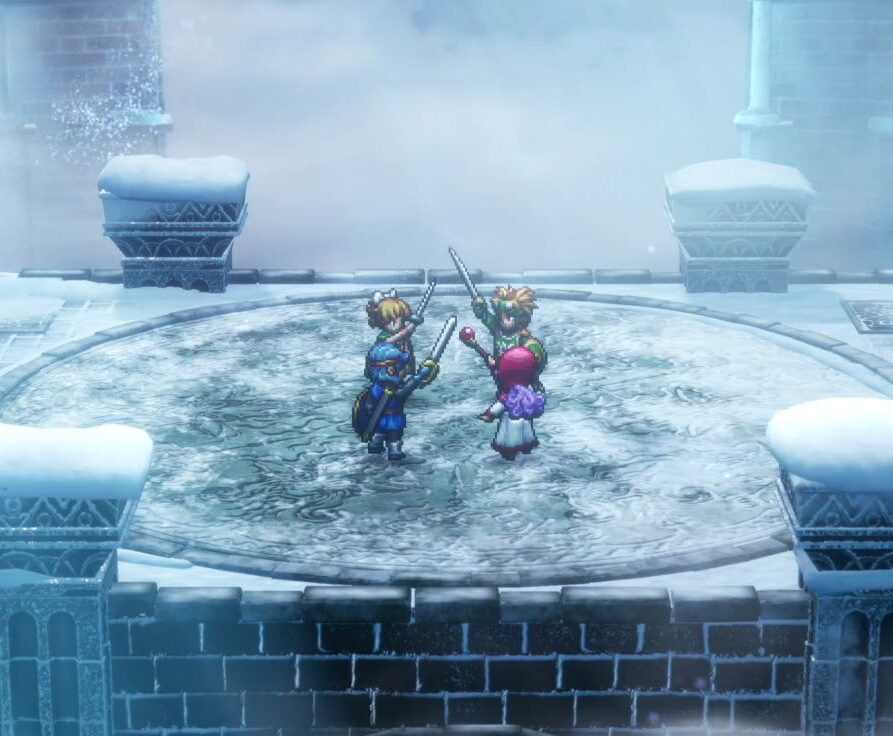I have a special connection with the original Dragon Warrior — my earliest memory is of the classic NES RPG. It was my older brother’s game, having gotten the copy thanks to the Nintendo Power promotion where you got it free when you got a year subscription to the magazine, but even with barely being able to grasp the NES controller, let alone read the menus (I was probably 2 or 3 at the time), I still loved to try my hand at the game. I have this vivid memory of moving around the hero in the starting throne room, wandering aimlessly without being able to leave, since you had to select specific commands from the menu to do so. Ever since then, Dragon Warrior and later Dragon Quest have had a special place in my heart, and I’ve made sure to get every version of the mainline games when they are released. This tradition continues with this year’s release of the Dragon Quest I & II HD-2D Remake, and my warm memories of the series have flooded back.
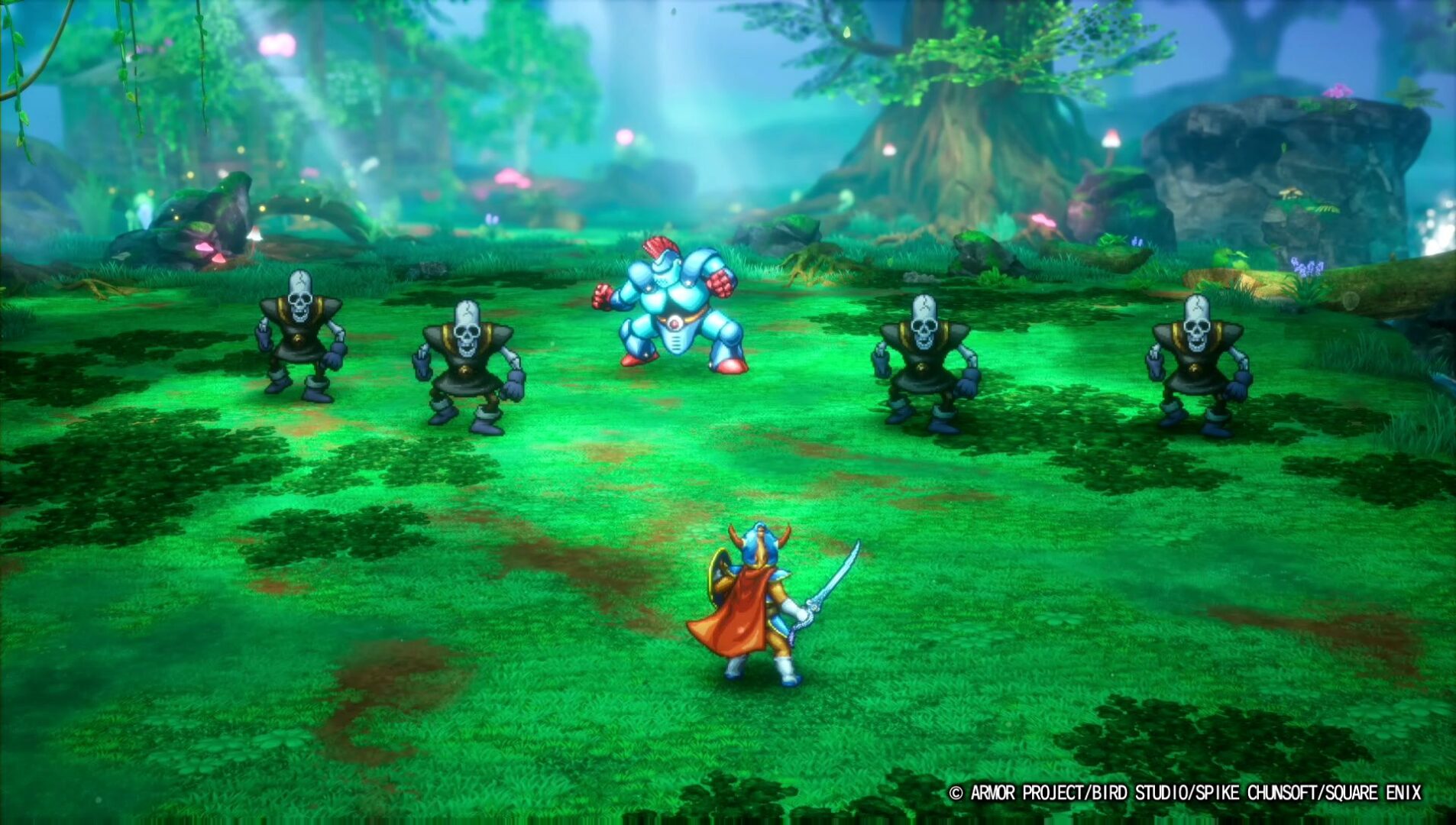
Dragon Quest I & III HD-2D Remake completes the Erdrick Trilogy that begins with Dragon Quest III. Taking place hundreds of years after the events of that game, in DQI you take up the sword as the ancestor, or Scion, of the hero from the third game, sent on a noble quest to rescue a princess and vanquish the evil Dragonlord, restoring peace to the land of Alefgard. Its follow-up, Dragon Quest II, jumps even further into the future, where you once again play as the scions of DQI’s hero, this time a party of princes and princesses, tasked to vanquish the evil facing the world once more.
These new remakes flesh out both tales considerably (more on this in a minute), but the core DNA of the original NES and GBC versions remains, and for fans like me who grew up with the previous versions and remember them fondly, revisiting them is like seeing an old friend again. Only this friend has grown up, gotten a degree, and is now big into history. Right from the start, Dragon Quest I expands on the initial motivations of the hero when he hears a voice telling him to save the world before quickly stepping in to save members of the Tantagel Royal Guard, all before taking him to meet with the king, where the other versions of the game always began. The adventure continues to grow and expand from there and didn’t stop, and even as impressive as DQI is, the real star of this package is DQII.
Thanks to the original title having far more of a story than the original Dragon Quest, this has given the team much more room to add new moments, features, and areas to expand on. Dragon Quest II now features an underwater region to explore, a brand new playable character, the Princess of Cannock, along with her associated story beats, and a surprising amount of post-game content to search out, full of secret goodies. Even moments that may have simply been alluded to or shown in passing, such as the opening assault on Moonbrooke, have so much more weight behind them thanks to the included new scenes. Incredibly poignant moments sprinkled throughout that would even require me to set my controller down to reflect on it (Elmoo, hugs, and the Priest – you’ll know what I mean). I clocked in over 50 hours into DQII alone, and that was before tackling the post-game, whereas older versions wouldn’t even take me a third of that time.
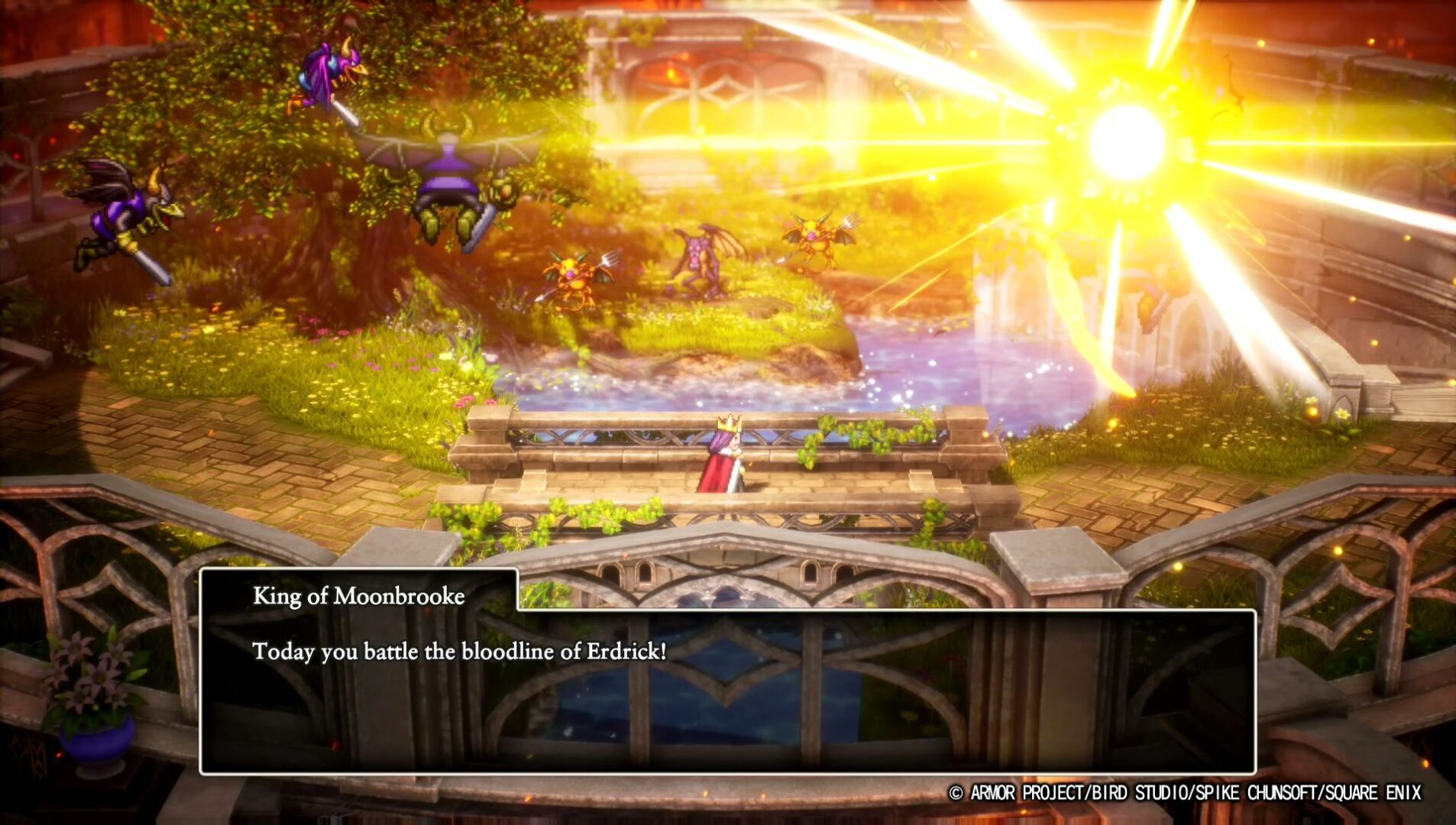
All of this new content does an incredible job elaborating on the story beats and narrative elements that make the HD-2D Remakes of I, II, and III all feel like a cohesive and fleshed-out connected trilogy, with returning characters and artwork motifs depicting moments of the previous heroes. Sometimes even showing what happened after the credits had rolled in their respective games. Characters and their relationships are expanded, and the interactions are among my favorite aspects of this collection, despite the main protagonists of both remaining silent; DQII is the standout, especially in this regard.
The original Princess of Moonbrooke and Prince of Cannock were a bit… lacking… back in the day, held back by the technology and infancy of the RPG genre at the time. While impressive for the time and serving their roles, this remake has now given them all a truly unique voice and distinct personality. The Prince of Cannock reminded me of Ryuji from Persona 5 — good-natured and loyal, but doesn’t always think things through before he acts. With the Princess of Moonbrooke, you can feel her struggles as she deals with the assault on her home, witness her coming out of her shell as the story progresses, and see her connection with her cousins grow. Moonbrooke, in fact, felt more like the protagonist this time around, with all three of the Prince of Midenhall’s companions completely overshadowing him and his mute gestures.
The new Princess of Cannock is a special treat. The strong-willed younger sister of the Prince is outspoken, passionate, and ready to kick butt at any time. You get a taste of her early on in the adventure, but don’t recruit her until a bit later on, and I found myself eager to have her back in my party during that in-between phase. She has some great lines, and her dynamic and personality fit splendidly. One thought that I kept having as I played was how much these games reminded me of the Final Fantasy VII Remake projects, obviously not in terms of how it looks, but in the fact that so much has been added, expanded, and tweaked, resulting in an experience that feels familiar yet incredibly foreign all at the same time.
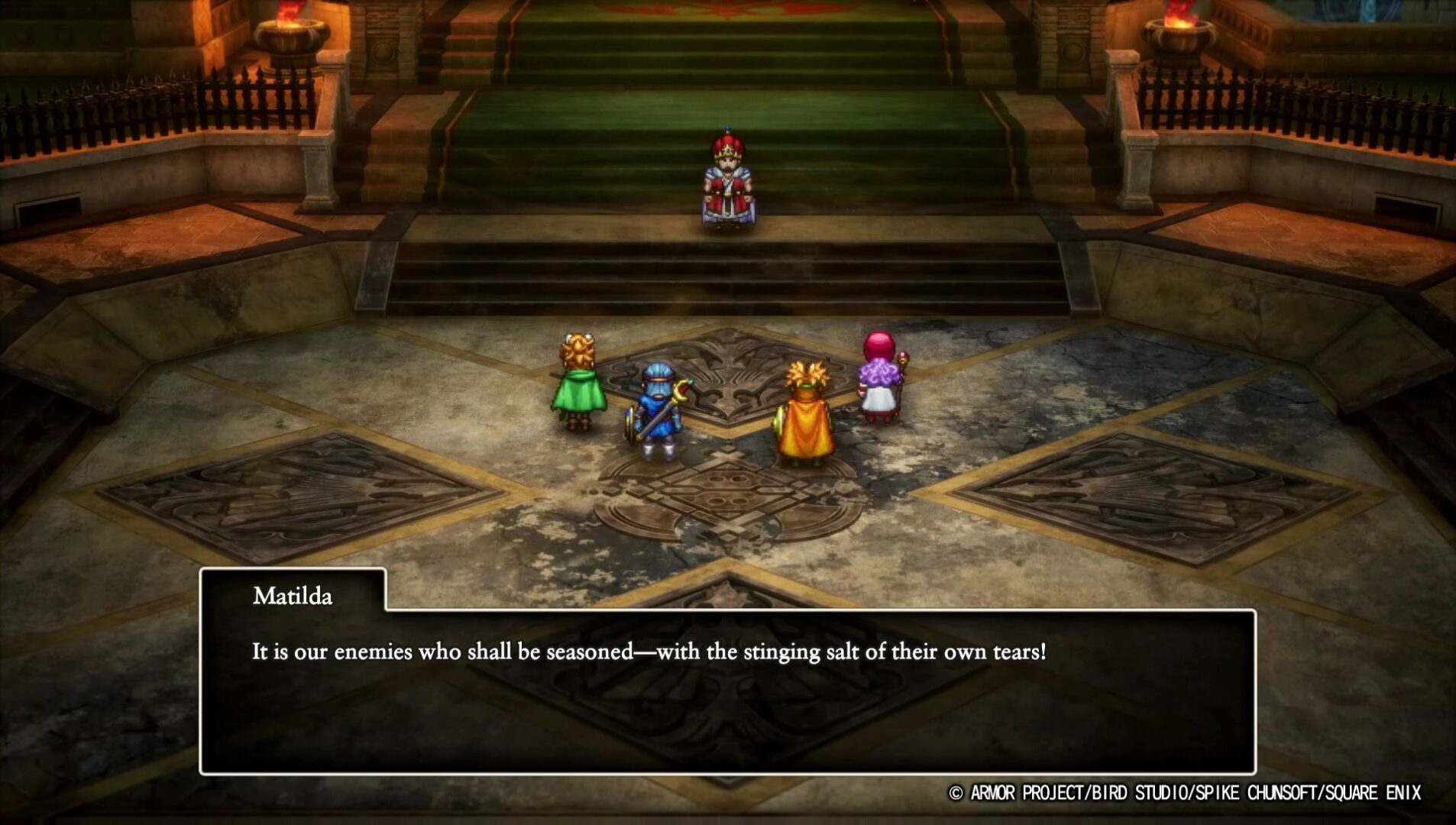
If you played last year’s HD-2D remake of Dragon Quest III, which serves as Dragon Quest I & II’s prequel, from a technical and gameplay standpoint, this package feels, looks, and behaves nearly identically. Features such as the ability to hotkey abilities or spells that DQ3 received post-launch come by default this time around, and these new games now have the ability to turn on and off invincibility when playing on the easier “Dracky Difficulty,” which previously was always turned on in last year’s quest.
The main new gameplay feature comes in the form of “Scrolls,” special items that will teach the various heroes unique spells and abilities. Dragon Quest I still remains a solo affair with you only in control of the singular Scion of Erdrick, and these scrolls help get the hero into fighting shape, giving you access to more spells and abilities that they wouldn’t learn normally. In the earlier games, DQI fights were always 1v1, but this is no longer the case, and these scrolls now do a great job of evening the odds to help the hero lay waste to large mobs of foes.
Even more types of scrolls can be picked up in DQII, with each scroll usable by different possible party members, and the fact that each scroll will disappear after a single use means you have to really think about who you are going to spend it on. Seeing as each character fits a sort of undefined “class” in the second game, these scrolls help you tailor characters more toward one role over the others, albeit only slightly. The earlier versions of these titles didn’t allow for much in the way of customization outside of gear and simply grinding some levels to learn some new tricks. While by their nature, DQ I and II don’t offer you the same flexibility as DQIII and its vocations, the scrolls do a well enough job of providing a small avenue for tailoring characters to a specific style, at least in the second title. And you will want every trick and advantage you can get playing this collection because these remakes are surprisingly and pleasantly challenging.v

While there’s no doubt that these retellings make the stories far more interesting and rich than the originals, and I do adore much of the additions, both games suffered from moments that dragged on too long and were mandatory. One such example was crafting the Sigils in Dragon Quest I, a brand-new section not present in any previous version that recounts the process the hero in that game had to go through to create the magic items pivotal to Dragon Quest II. It was certainly a neat inclusion that helped tie the two games together, but I was over it by the halfway point, and I wonder if it would have been better served as an optional quest you could undertake.
These new retellings also do away with some of the sillier and optional choices whose omissions are a bit of a bummer. I remember fondly being able to simply choose not to save the princess in the original Dragon Warrior, and sure, it wouldn’t make sense in this new, more cohesive trilogy, but a potential homage or mention of it would have been neat. Dragon Quest II has a similar tweak, no longer letting you choose not to heal the Prince of Cannock and instead challenging yourself by playing through the rest of the game with a party member down. The second entry also features a number of dialogue choices that don’t actually impact anything and force you into making the choice it requires you to make. This sort of thing is a personal peeve of mine and always results in me feeling like I’ve been tricked or wasted my time. If you weren’t going to actually let me make the choice or were going to force me down the path you wanted me to take, why give me the choice in the first place?
Despite those occasional moments where I felt things bogged down or became a bit bloated, I still had a thoroughly fun time with Dragon Quest 1 & 2 HD-2D Remakes. The improved characterization and fleshing out of details to make all three games connect better have truly given the Erdrick Trilogy the legendary upgrade and facelift it deserves while still scratching that grindy RPG goodness that I love about the Dragon Quest games specifically. That said, as much as I enjoyed it, I don’t see myself revisiting these versions of the first two games; instead, I’ll opt for the shorter, smaller experiences. There is just a bit too much bloat found here, and without the vocation system of DQ3, there aren’t enough elements outside of doing a challenge run to pull me back to spend another 70+ hours, at least not in the foreseeable future.
Dragon Quest I & II HD-2D Remake brings about a wonderful conclusion to the Erdrick Trilogy that will be a delight and must-play for folks who enjoyed last year’s DQIII HD-2D release. I love the resurgence that Dragon Quest has been having the past few years, and I am already counting down the days until next year’s release of Dragon Quest VII Reimagined, and I have my fingers crossed that the Zeniethian Trilogy will be getting a similar treatment one day, too. Until then, Dragon Quest I & II HD-2D is an easy recommendation for RPG and Dragon Quest fans.
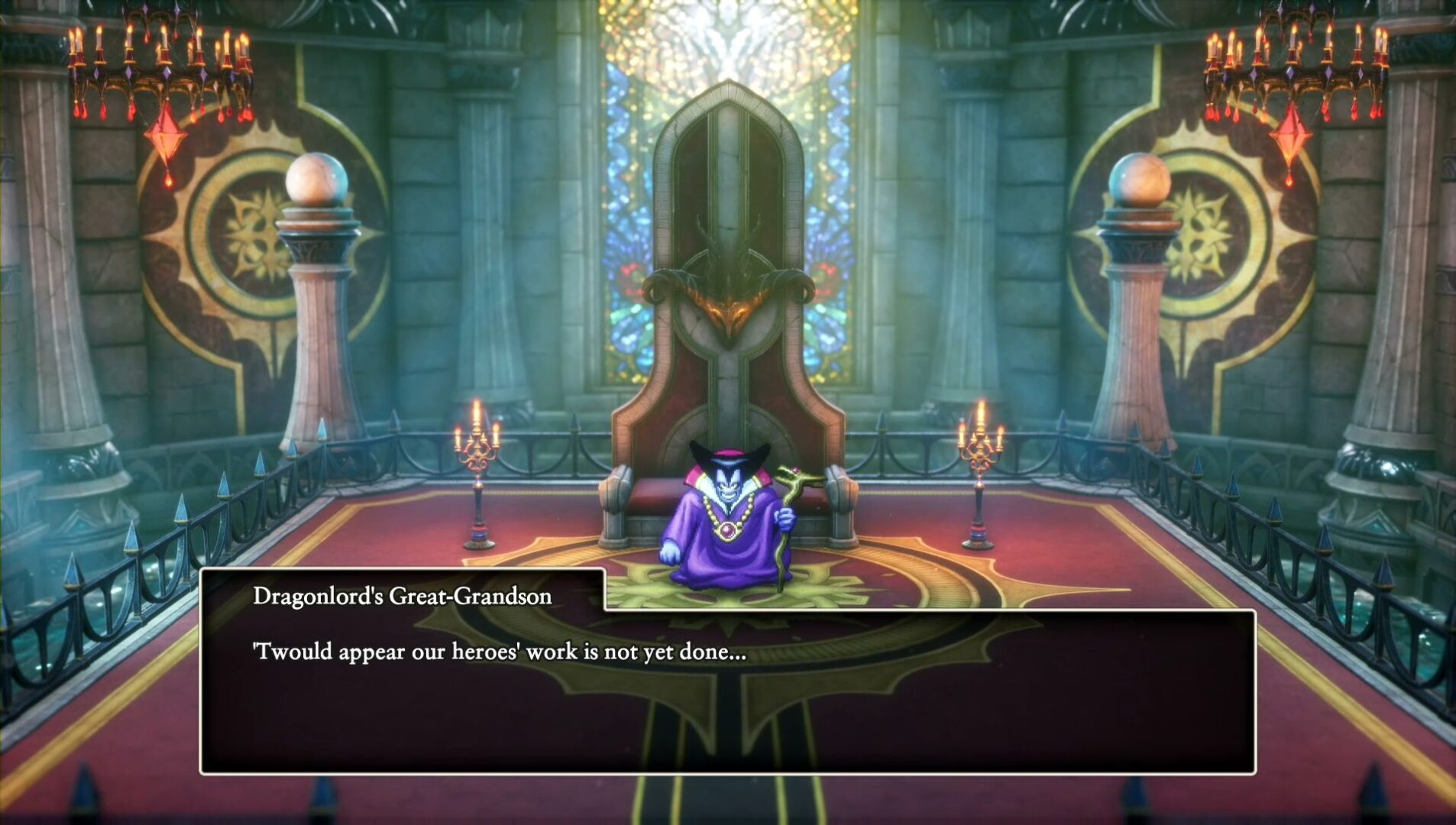
Dragon Quest 1 & 2 HD-2D Remake releases n October 30, 2025 for the PC, Nintendo Switch and Switch 2, PlayStation 5, and Xbox Series X|S. We were provided a PS5 code by the publisher for review.


